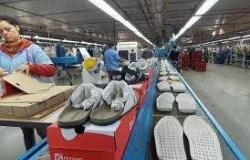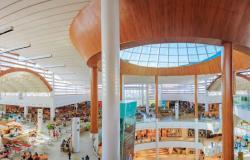Vacaria places Rio Grande do Sul among the states to receive digital inclusion initiatives from the Science Center for Development in Digital Agriculture (CCD-AD/Semear Digital), coordinated by Embrapa Digital Agriculture (Campinas/SP) with funding from Fapesp. The first meeting of the program teams with local leaders was held at the end of February at Embrapa’s Temperate Climate Fruit Growing Experimental Station, located in the municipality. Semear Digital can reach up to 14 thousand small and medium-sized rural properties in ten municipalities spread across the five regions of the country. With around 64 thousand inhabitants, Vacaria is the largest apple producer in the country and has more than a thousand establishments dedicated to agricultural activities , with emphasis on fruit growing. Cable internet reaches even more distant regions such as the Nova Estrela settlement, located almost 80 km from the city. However, 3 and 4 G coverage is restricted to the region where the local agroindustry is located, which is highly technified, with tracked production and prepared to supply the national market all year round, with the aid of a modern fruit refrigeration system, explains the partnership coordinator for Semear Digital, Luciana Romani, from Embrapa Agricultura Digital. “The large enterprise has and makes use of digital resources. The small one has almost nothing about digital agriculture and that is where the project will make a difference”, says the coordinator. Among the first demands of family farming are training, especially those focused on property management. Pequenas Frutas – “Family farming in Vacaria is based on profitable activities, as is the case of those who work in the cultivation and sale of red fruits, such as blackberries, blueberries and raspberries”, points out socio-economist Celso Vegro, from the Institute of Agricultural Economics (IEA) of São Paulo. Maintaining the quality of the fruits post-harvest is among the central difficulties of the segment which, combined with poor transport logistics, causes significant losses in the quality of the products sold, reports the specialist from Semear Digital’s partner institution based on an initial assessment. Vegro highlights that orchards are demanding in terms of manual labor, and collective effort schemes are common, which allow managing the demand for work between properties and crops in order to keep farms profitable, he says. Reducing the burden of work and the rural exodus is, therefore, on the list of needs of the productive sector. The socio-economist believes that the implementation of agroforestry can support the economic use of existing forest reserves on properties. Furthermore, pasture management and forage supply technologies during the winter can make it possible to improve the well-being of families who keep animals. Precision fruit growing – For the researcher at Embrapa Uva e Vinho (Bento Gonçalves/RS), Luciano Gebler, highlighted as the focal point of DAT Vacaria, the work aimed at reducing inequalities in the adoption of digital technologies among small and medium-sized producers fruits implies the development of technologies for the growth of precision fruit growing and digital agriculture. “We have results in this direction with the productivity mapping system at harvest and in pre-harvest orchards; the development of instrumentation to control pests and diseases; communication and data transmission on and off the property and robotics in fruit production”, says Gebler. For the urban environment, the researcher signals the creation of a technological innovation hub, aiming to strengthen the regional ecosystem. Embrapa Digital Agriculture researcher Thiago Teixeira Santos assesses that the fruit growing sector has highlighted two major needs: productivity mapping and automation of intensive activities such as harvesting. “Harvest automation is a long-term effort, as it requires not only new machines, capable of harvesting fruits without damaging them, but also changes in the management system that enable the use of machines, such as two-dimensional orchards, in that the fruits are arranged on vertical and narrow “clotheslines” (Photo). Andrea de Rossi, Silvio Alves and Edison Bolson are part of the Embrapa Uva e Vinho team that will work at DAT Vacaria alongside Gebler. They are partners of the Semear Digital Center: the “Luiz de Queiroz” School of Agriculture of the University of São Paulo (Esalq/USP) is also part of the consortium alongside the Agronomic Institute (IAC/SP), the Institute of Agricultural Economics (IEA/ SP), Federal University of Lavras (UFLA) and the National Telecommunications Institute (Inatel), in addition to the Telecommunications Research and Development Center (CPqD). To find out more, visit: Embrapa and partners will develop digital inclusion actions in ten Brazilian municipalities
Vacaria places Rio Grande do Sul among the states to receive digital inclusion initiatives from the Science Center for Development in Digital Agriculture (CCD-AD/Semear Digital), coordinated by Embrapa Digital Agriculture (Campinas/SP) with funding from Fapesp. The first meeting of the program teams with local leaders was held at the end of February at Embrapa’s Temperate Climate Fruit Growing Experimental Station, located in the municipality.
Semear Digital can reach up to 14 thousand small and medium-sized rural properties in ten municipalities spread across the five regions of the country. With around 64 thousand inhabitants, Vacaria is the largest apple producer in the country and has more than a thousand establishments dedicated to agricultural activities , with emphasis on fruit growing. Cable internet reaches even more distant regions such as the Nova Estrela settlement, located almost 80 km from the city.
However, 3 and 4 G coverage is restricted to the region where the local agroindustry is located, which is highly technified, with tracked production and prepared to supply the national market all year round, with the aid of a modern fruit refrigeration system, explains the partnership coordinator for Semear Digital, Luciana Romani, from Embrapa Agricultura Digital.
“The large enterprise has and makes use of digital resources. The small one has almost nothing about digital agriculture and that is where the project will make a difference”, says the coordinator. Among the first demands of family farming are training, especially those focused on property management.
Small Fruits – “Family farming in Vacaria is based on profitable activities, as is the case of those who work in the cultivation and sale of red fruits, such as blackberries, blueberries and raspberries”, points out socio-economist Celso Vegro, from the Institute of Agricultural Economics (IEA ) from Sao Paulo.
Maintaining the quality of the fruits post-harvest is among the central difficulties of the segment which, combined with poor transport logistics, causes significant losses in the quality of the products sold, reports the specialist from Semear Digital’s partner institution based on an initial assessment.
Vegro highlights that orchards are demanding in terms of manual labor, and collective effort schemes are common, which allow managing the demand for work between properties and crops in order to keep farms profitable, he indicates. Reducing the burden of work and the rural exodus is, therefore, on the list of needs of the productive sector.
The socio-economist believes that the implementation of agroforestry can support the economic use of existing forest reserves on properties. Furthermore, pasture management and forage supply technologies during the winter can make it possible to improve the well-being of families who keep animals.
Precision fruit growing – For the researcher at Embrapa Uva e Vinho (Bento Gonçalves/RS), Luciano Gebler, highlighted as a focal point of DAT Vacaria, the work aimed at reducing inequalities in the adoption of digital technologies among small and medium-sized producers of small fruits implies the development of technologies for the growth of precision fruit growing and digital agriculture.
“We have results in this direction with the productivity mapping system at harvest and in pre-harvest orchards; the development of instrumentation to control pests and diseases; communication and data transmission on and off the property and robotics in fruit production”, says Gebler. For the urban environment, the researcher signals the creation of a technological innovation hub, aiming to strengthen the regional ecosystem.
Embrapa Digital Agriculture researcher Thiago Teixeira Santos assesses that the fruit growing sector has highlighted two major needs: productivity mapping and automation of intensive activities such as harvesting. “Harvest automation is a long-term effort, as it requires not only new machines, capable of harvesting fruits without damaging them, but also changes in the management system that enable the use of machines, such as two-dimensional orchards, in that the fruits are arranged on vertical and narrow “clotheslines” (Photo).
Andrea de Rossi, Silvio Alves and Edison Bolson are part of the Embrapa Uva e Vinho team that will work at DAT Vacaria alongside Gebler.
They are partners of Centro Semear Digital: the “Luiz de Queiroz” Higher School of Agriculture of the University of São Paulo (Esalq/USP) is also part of the consortium alongside the Agronomic Institute (IAC/SP), the Institute of Agricultural Economics (IEA/ SP), Federal University of Lavras (UFLA) and the National Telecommunications Institute (Inatel), in addition to the Telecommunications Research and Development Center (CPqD).
To find out more, visit: Embrapa and partners will develop digital inclusion actions in ten Brazilian municipalities
Tags: Embrapas digital inclusion program work small fruit apple producers







